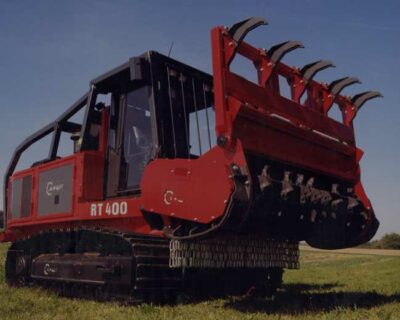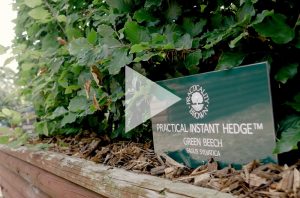Instant Hedge Maintenance
Irrigation
The amount of water available to your hedge roots depends on the water retention capacity of the soil (e.g. sandy, or clay soil) and cannot be exactly planned. It is important that you observe the hedge foliage for signs of drought so that your watering regime can be adjusted as necessary; external signs of drought are that the foliage wilts and sometimes rolls or turns.
It is important to note that it is also easy to over water your hedge and if you notice leaves turning yellow or expereince unseasonal leaf drop, then it is likely to be over watered; watered in which case immediate action should be taken to cut back on watering. If the soil surface looks dry but you have symptoms of over watering, then the moisture content needs to be checked 300 – 400mm below ground level. Dig a small hole beside the hedge rootstrip which will indicate the amount of water getting to the roots; if it’s obviously wet, then the hedge is over-watered.
Watering in the winter is not usually required unless the hedge is evergreen and there have been long periods with little or no rainfall. We recommend that irrigation timers are stored indoors over the winter and re-connected to the system in early spring.
The following table shows you the necessary amount of water required, per linear metre per week, for a newly planted instant hedge. This should be continued until the hedge has fully established, which is usually 24 months after planting. Watering can then be reduced as required.
| Soil Type | Weather Conditions | Weekly water requirement per metre | Ideal watering frequency |
|---|---|---|---|
| Clay loam | Average | 20 – 30 litres | Every other day |
| Clay loam | Dry | 30 – 40 litres | Every other day |
| Sandy loam | Average | 30 – 40 litres | Every day |
| Sandy loam | Dry | 40 – 50 litres | Every day |
Please note that this is a guide only and your observation of the hedge is most important.
Feeding
We advise that you feed your instant hedge annually with a quality nutrient blend fertiliser and the best application time for this is early spring, although any time of the year is beneficial.
Pruning
The best time of the year to prune a hedge depends on the type of plant. If the plant buds in the early spring, it can be trimmed late summer. If it blooms in the late spring, then later in the autumn or winter will be better. For non-flowering hedges, pruning can take place in the autumn or winter as well. See our hedge selection guide which gives suggested pruning months.
Whether using hand shears for smaller hedges or a powered hedge trimmer for larger hedges, you should ensure the equipment is sharp and well lubricated. Plan the trimming in advance, removing any obstacles on the ground before starting and think about the shape you would like to create; a formal, clipped hedge or a more shrub-like and natural.
Happy Customer
Purple Beech, Hockwold
“Nearly 100 linear metres of Purple Beech, 1.8/2.0m high were installed at Hockwold, Suffolk, ensuring that the landscape matched the quality of the property build. The client was delighted, commenting on our overall service from point of contact to completions as “totally professional and it will be a pleasure to work with you again”. JR.




